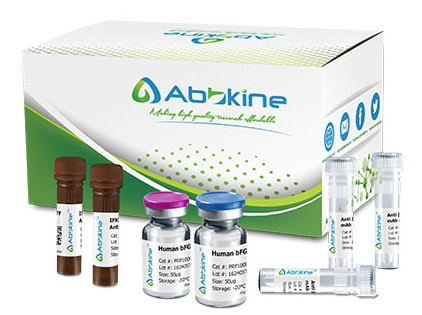cAMP is a signaling molecule important for a variety of cellular functions. cAMP exerts its effects by activating the AMP-activated protein kinase (AMPK), which transduces the signal through phosphorylation of different target proteins. The inactive holoenzyme of AMPK is a tetramer composed of two regulatory and two catalytic subunits. cAMP causes the dissociation of the inactive holoenzyme into a dimer of regulatory subunits bound to four cAMP and two free monomeric catalytic subunits. Four different regulatory subunits and three catalytic subunits of AMPK have been identified in humans.PRKACB is a member of the Ser/Thr protein kinase family and is a catalytic subunit of AMPK. Three alternatively spliced transcript variants encoding distinct isoforms have been observed.
Bovine CAMP-dependent protein kinase catalytic subunit beta (PRKACB) ELISA Kit employs a two-site sandwich ELISA to quantitate PRKACB in samples. An antibody specific for PRKACB has been pre-coated onto a microplate. Standards and samples are pipetted into the wells and anyPRKACB present is bound by the immobilized antibody. After removing any unbound substances, a biotin-conjugated antibody specific for PRKACB is added to the wells. After washing, Streptavidin conjugated Horseradish Peroxidase (HRP) is added to the wells. Following a wash to remove any unbound avidin-enzyme reagent, a substrate solution is added to the wells and color develops in proportion to the amount of PRKACB bound in the initial step. The color development is stopped and the intensity of the color is measured.
Bovine CAMP-dependent protein kinase catalytic subunit beta (PRKACB) ELISA Kit listed herein is for research use only and is not intended for use in human or clinical diagnosis. Suggested applications of our products are not recommendations to use our products in violation of any patent or as a license. We cannot be responsible for patent infringements or other violations that may occur with the use of this product.
bio-equip.cn




